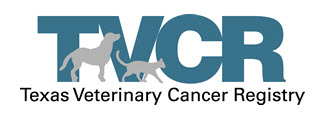 The Texas Veterinary Cancer Registry (TVCR) is a Texas-based animal care database formed to identify and register pets with cancer in order to facilitate and promote their medical treatment that lead to cures for cancer in pets and people.
The Texas Veterinary Cancer Registry (TVCR) is a Texas-based animal care database formed to identify and register pets with cancer in order to facilitate and promote their medical treatment that lead to cures for cancer in pets and people.
As a joint effort of the CARE Foundation, Baylor University Medical Center (BUMC) at Dallas and the Texas Veterinary Oncology Group, The Texas Veterinary Cancer Registry will advance medical breakthroughs in both animal and human care, helping to ensure that new treatments are available for cancer in humans become available to animals in an efficient and timely manner.
The TVCR will advance veterinary cancer research by gathering information from pet owners whose pets have been diagnosed with a naturally-occurring cancer. Subsequent enrollment in clinical trials of new drugs and devices to improve the animal’s healthcare may be possible.
Their Mission
The Texas Veterinary Cancer Registry aims to advance veterinary cancer research and to create connections between researchers, veterinarians and owners of pets with naturally-occurring disease that could provide the critical data to someday help eliminate cancer as we know it.
Click here to find out how the registry works and how you can register your dog or cat.
About Pet Cancer
Cancer is a group of diseases in which abnormal cells grow without control, they invade surrounding tissues and ultimately spread to organs throughout the body. There are more than a hundred specific cancer types, each showing unique behaviors and requiring tumor specific treatment strategies. In a normal body, new cells (which form the structures of the body and control its functions) are constantly being made to replace old or damaged cells. This process is very well regulated with a delicate balance existing between cell multiplication and cell death to maintain the right number of cells. When this process goes wrong and the body begins to produce more cells than it needs and/or cells don’t die when they should, the extra cells may undergo genetic changes and can then form a mass called a tumor.
The article is extensive and covers: Canine Tumors, Insulinomas, Chondrosarcoma of the bone in dogs, Hemangioma and Hemangiosarcoma in dogs, Canine Lymphosarcoma (LSA), Squamous Cell Carcinoma, Mast Cell Tumors, Basal Cell Carcinomas, Lymphoma, Osteosarcoma, and Melanoma. To read the full article, please click here.
To contact TCVR, please follow this link.








